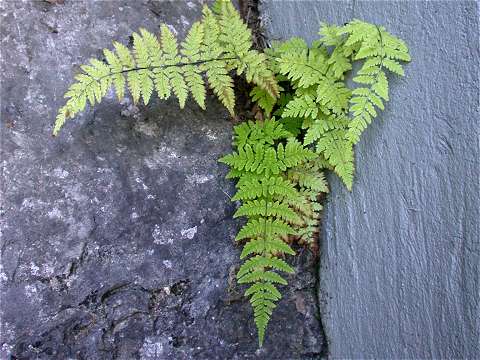

Cystopteris bulbifera - (image 1 of 5)
Taxonomy
Family: Woodsiaceae
Habitat
Limestone cliffs and ravines. Also grows in calcareous woods and springy areas.
Associates
Aquilegia canadensis, Camptosorus rhizophyllus, Aralia racemosa, Mitella diphylla, Pilea pumila, Solidago flexicaulis.
Distribution
Nova Scotia and New Brunswick and Quebec west to MN and SD, south to VA and MO and in mountains to GA.
Morphology
Fronds pale green, narrow, 30-80 cm, usually with fewer than 16 pairs of well-developed pinnae; lowest pair of pinnae a little longer than the next pair. Nearly all veins of ultimate segments terminating in the sinuses. Frond shape elongate triangular, tapering to a long, often drooping point. Bulblets form beneath subleaflets. Deciduous.
Notes
Spores produced late May to early August.
Wetland indicator: Facultative Wetland -
The only fern of eastern NA that forms bulblets. These fall off and can form new plants. The bulblets appear to withstand drying for a period of time.
References
Cobb, B. 1984. A Field Guide to Ferns and Their Related Families.
Houghton Mifflin Co., New York, NY
Gleason, Henry A.
and A. Cronquist. 1991. Manual of Vascular Plants of Northeastern United States
and Adjacent Canada. Second Ed.
The New York Botanical Garden. Bronx, NY
Swink, F. and G. Wilhelm. 1994. Plants of the Chicago Region.
Indiana Academy of Science. The Morton Arboretum. Lisle, Illinois.
|
Michael Hough © 2004 |